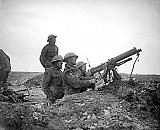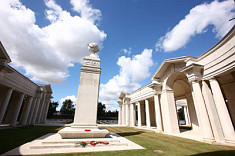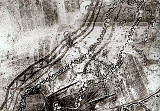Contents
Between 1914 and 1918 aerial photography played a major role in the Great War, a conflict dominated by artillery. In order for the latter to be effective, knowledge of the enemy’s positions needed to be as accurate as possible.
Very few generals had really measured the usefulness of observation aircraft until the advent of the war of position which immediately gave a predominant role to artillery. Thereafter the mapping of enemy positions became essential if the gunners were to exploit to the full the improving power, accuracy and rate of fire of their ordinance which was propelling shells ever further and with a greater payload.
During the first few weeks of the war, the Germans employed observation balloons to give them a tactical advantage during the initial engagements. On the other side, information about German movements supplied by early reconnaissance aircraft to the French and British staffs enabled the BEF to avoid catastrophe during the Battle of Mons on 22 August 1914; and on 3 September, the fact that French planes had seen that Von Kluck's armies had changed direction made a decisive contribution to the decision for the Marne counter-attack. To begin with, observations were purely visual but on 15 September 1914 the first aerial photograph of the conflict was taken by a British reconnaissance aircraft as it flew over German lines.
As early as 1915, with the trench warfare developing apace, the general staffs recognized the need for large-scale aerial reconnaissance operations entrusted to special units equipped with cameras designed for the purpose. They required reliable and up-to-date information about enemy positions in order to draw up accurate maps of the trenches to a scale of 1:10000. Aerial reconnaissance for mapping purposes was inaugurated at Neuve-Chapelle in mid 1915 by the British and increased exponentially in 1916, particularly during preparations for the Battle of the Somme. In the latter half of the conflict the belligerents had the capacity to photograph the entire front on a daily basis, weather permitting.
The importance of this new observation method led to the notion of controlling airspace and, as a result, fighter aircraft came into being whose purpose was to eradicate enemy reconnaissance aircraft and protect their own above enemy lines.
Stereoscopic photography enabled highly accurate maps of the front to be drawn up for the purpose of directing artillery fire. Enlargements exposed the minutest of details, while stereoscopic vision detected the slightest changes in relief. In addition to the improvements made on the technical side of photography, spectacular progress was also made in the fledgling discipline of photo-interpretation.
By 1918, the French Army was taking and developing thousands of aerial photographs every day.
Yves LE MANER,
Director of La Coupole,
History and Remembrance Centre of Northern France
Archive pictures

[Q 5172] Imperial War Museum / Wikimedia Commons (jpg - 0.08 MB)
Soldats britanniques du Machine Gun Corps assurant la défense anti-aérienne lors de la bataille d'Arras (avril 1917)

'The Literary Digest History of the World War' by F.W.Halsey 1920 (jpg - 0.16 MB)





